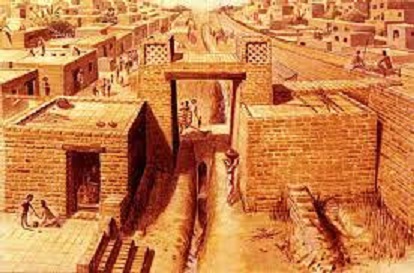The Harappan Civilization (Subsistence Pattern)

The Harappan Civilization (Subsistence Pattern)
Last Updated On: 14 August 2023
A stable system of agriculture, supplemented by animal husbandary, hunting and plant gathering provided economic sustenance to the urban network. In view of the widely differing ecological conditions of the distribution area of this civilization, the subsistence strategy is not likely to have been a single or uniform one. The Harappan were familiar with the plough. Terracotta ploughs have been found at Indus sites in Cholistan and at Banawali and a ploughed field was revealed through excavation at Kalibangan. Though it belonged to the early Harappan period there is no reason to doubt that the pattern countinued during the mature Harappan period. The Kalibangan field contained two sets of furrows crossing each other at right angle, thus forming a grid pattern and it is likely that two crops were raised in same field. In modern field in that zone mustard is grown in one set of furrows and horse gram in the other. Mixed cropping is suggested by other evidence as well as for instance in the mixture of wheat and barley at Indus sites, Such missed cropping is practiced even today in many parts of north India as an insurance against weather hazards so that wheat fails to ripen the hardier barley is sure to yield a crop.
Earlier a board division of cultivated crops among those areas in and around the Indus valley on the one hand and Gujarat on the other hand used to be recognized. Inthe Indus area the cereal component to be exclusively of wheat and barley while in Gujrat, rice and millets were more important. However both rice and finger millet have now been discovered in Harappa. There is a range of other cultivated crops including peas, lentils, chickpeas, sesame, flax, legumes and cotton. The range suggests cotton. In Sind, cotton is usually a summer crop and such crops have generally been cultivated with the help of irrigation. This is because rainfall is extremely scanty at about 8 inches. if any part of the Indian subcontinent which has less than 10 or 12 inches of rainfall, if agriculture on any scale has to be carried out with a substantial reduction of the risk factor, it can only be done with irrigation.
Cattle meat was the favourite animal food of the Indus people and cattle bones have been found in large quantities at all sites that have yielded bones. In addition to their meat, cattle and buffaloes must have supported agricultural operation and served as draught animals. Among other things this is suggested by their age of slaughter. At Shikarpur in Gujarat, a majority of the cattle and buffaloes lived up to the age of maturity and were than killed at various stage till they reached eight years of age. Mutton was also popular and bones sheep, goat have been found at almost all Indus sites. Hunting of animals was not a negligible activity.